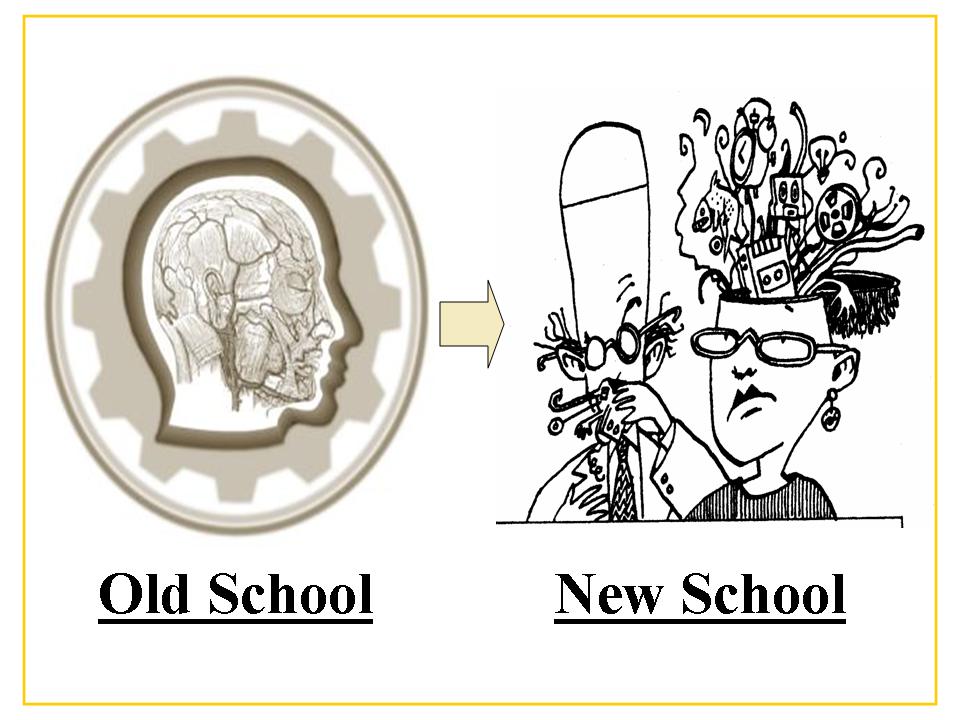The Mind: Old versus New School
Monday, October 13th, 2008Results from cognitive science over the last 30 years have completely flipped our understanding of how minds work in everyday situations. The old view casts us as conscious thinkers. Rationally attending to facts to learn and logically weighing alternatives to make decisions. This view of how minds work infiltrated social policy, economics, education, organizational design, product engineering and service design. The results were the prosperity and problems of the industrial era.
The new view of mind casts us mostly as unconscious emoters. It turns out that when you look at how we really learn, make decisions, solve problems and do other cognitive chores the processes we use are mostly unconscious and driven by metaphors, patterns, biases, mental short-cuts, emotions and other visceral states. This does not make use irrational just a different type of thinker than was previously assumed. We still reason but more with passion than facts. The calculus of how we think is messier and more of an evolutionary kludge than it is the smooth wheels of a rational computing machine.
Not embracing this new view of mind as designers has really created some problems. For example, this is why kids hate math, insurance is still sold rather than bought and we fail to take care of ourselves and save for retirement despite so many educational messages and products to help us. They assume we think and learn based on the old view of mind and talk right past us.
On the other hand, embracing the new view of mind as designers creates some real opportunity for innovation and even competitive advantage.
